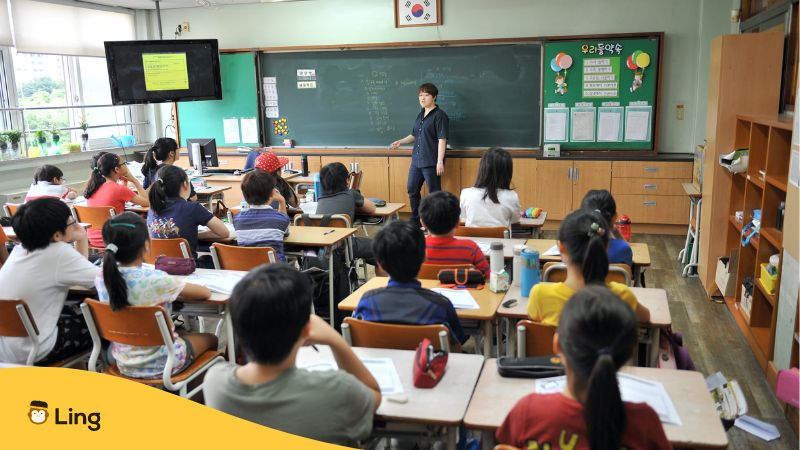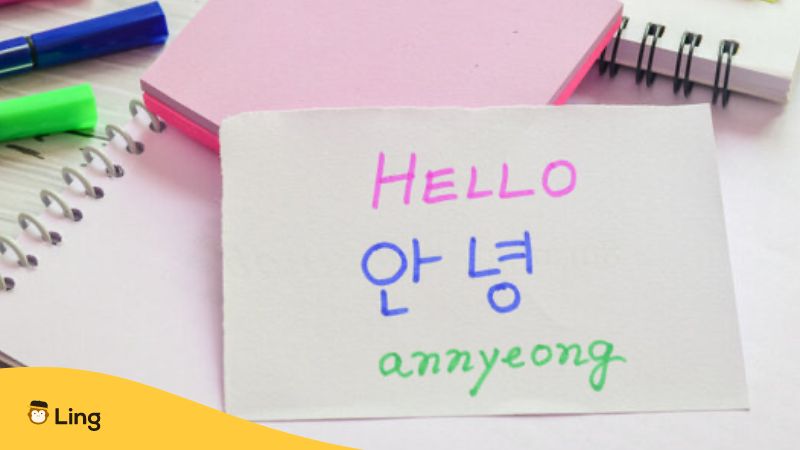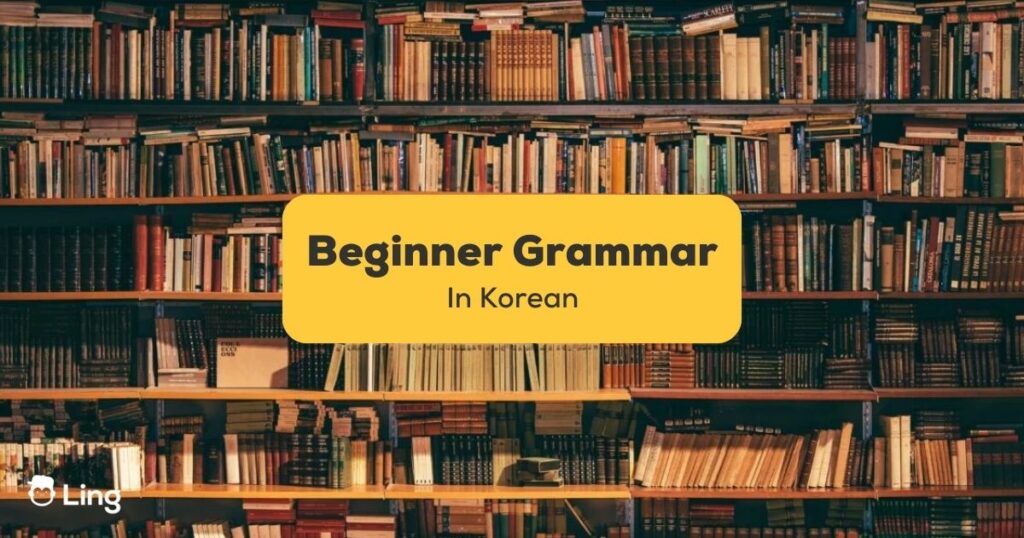Planning to learn beginner Korean grammar? I can’t blame you for wanting to master this tricky stuff!
As a fellow K-pop stan who jams to TWICE and BTS daily or a K-drama fanatic currently binging my 5th sweeping saga this month, I know you’ve likely caught the Korean language bug too. You passionately belt out lyrics from all your favorite artists and find yourself picking up common phrases from those addictive shows.
But let’s be real…understanding a few Korean words is cool and all but the grammar stuff? Now that’s worlds apart. You actually need to dedicate time to practice and learn the basic rules if you want to level up beyond fan to legit Korean speaker.
I definitely tried faking it for a while using the limited lyrics and lines I’d memorized. But that can only get you so far, am I right? As K-obsessives, I think we all have an underlying drive to genuinely communicate with native speakers, not just copy sounds.
That’s why in this beginner grammar guide, I’ll share the key tips and tools you need to establish a solid linguistic foundation. Ready? Let’s begin!

Beginner Korean Grammar Structure
When I first started learning, I assumed Korean sentence structure would be like English – subject, then verb, then object. You know, “I (subject) eat (verb) food (object).” But there’s a crucial difference! In Korean, it actually goes subject, object, and THEN verb.
Take the sentence, “I read books.”
In English, that’s: I (subject) read (verb) books (object).
But in Korean it goes: I (subject) books (object) read (verb) or 저는 책을 읽습니다 (Jeoneun chaegeul ikseumnida). Here, 저는 (jeoneun) is “I + Topic Marker 는“, 책을 (chaekeul) is “Book + Object Marker 을“, and 읽습니다 (ikseumnida) is “To read (Verb Stem) + Formal Verb Ending”.
It may seem backward and weird at first! But Korean verbs always come LAST, while English sticks them in the middle. And those other words tagged at the end of the Korean words? Those just help identify that it’s the subject (I) or the object (books) in the sentence.
So in Korean, you:
- Start with the subject
- Add the object
- End with the verb

Basic Korean Verb Endings
You may have noticed that Korean verbs act a bit differently from English ones. Verbs change form based on who you’re talking to – like your friend versus your boss. This change in verbs is called conjugation.
The good news is there are just three Korean verb endings you need to know as a beginner:
Formal Polite
- Used for strangers, superiors at work, teachers, etc.
- Ends in “~습니다” (seumnida)
Casual Polite
- For colleagues, classmates, or friends.
- Ends in “~아/어/여요” (a/eo/yeoyo)
Informal
- For family, very close friends.
- Ends in “~아/어/여” (a/eo/yeo)
Ready to see them in action? Check out the table below.
| English Translation | Korean Script | Romanization |
|---|---|---|
| I read a book. (Formal Verb Ending ~ㅂ/습니다, b/seumnida) | 저는 책을 읽습니다. | Jeoneun chaekeul ikseumnida |
| I read a book. (Informal Verb Ending ~아/어/여요, a/eo/yeoyo) | 저는 책을 읽어요. | Jeoneun chaekeul ilgeoyo |
| I read a book. (Casual Verb Ending ~아/어/여, a/eo/yeo) | 저는 책을 읽어. | Jeoneun chaekeul ilgeo |
As you can see, the formal verb ending that you use in formal situations is ~ㅂ/습니다 (b/seumnida). The verb ending you choose depends on whether the verb stem ends in a vowel or a consonant. In this instance, you’d use ~ㅂ니다 (bnida) if the verb stem ends in a vowel, and ~습니다 (seumnida) if the verb ends in a consonant. For example, the verb “마시다” (masida) which means “to drink” ends in a vowel 이 (i), so it’d be “마십니다” (masimnida). On the other hand, the verb “먹다” (meokda) which means “to eat” ends in a consonant ㄱ (g/k), so it’d be “먹습니다” (meokseubmida).
Moving on, the informal verb ending is ~아/어/여요 (a/eo/yeoyo). Whether you use 아 (a), 어 (eo), or 여 (yeo) with 요 (yo) really depends on the verb stem you’re attaching the verb ending to. In the case of our example, the verb “to drink” or “마시다” (masida) would be “마셔요” (masyeoyo) since the vowel 이 (i) conjugates to 여 (yeo), while the verb “to eat” or “먹다” (meokda) would be “먹어요” (meokeoyo) since the vowel in “먹” (meok) is “어” (eo). Likewise, if you were trying to conjugate the verb “to sleep” or “자다” (jada), you would get “자요” (jayo) since the vowel in “자” (ja) is “아” (a).
Once you’ve gotten the hang of the informal verb ending, you’ll have no problem grasping the casual verb ending. Why? Other than taking away the “요” (yo) verb ending, it’s exactly the same! So instead of “to drink” or “마셔요” (masyeoyo), “to eat” or “먹어요” (meokeoyo), and “to sleep” or “자요” (jayo), you’ll simply have “마셔” (masyeo), “먹어” (meokeo), and “자” (ja)!

Basic Korean Particles
Now that we’ve learned about making basic Korean sentences and conjugating Korean verbs let’s move on to another part of Korean grammar rules that’s just as important: Korean particles! They don’t exist in English too, so pay extra close attention to my explanation.
But first of all, what’s a particle? Well, they’re small words that you attach to nouns or pronouns to indicate their role in a sentence. For example, attaching the topic particle 는/은 (neun/eun) to a noun indicates that it’s the topic of the sentence!
Here are some basic particles:
- ~는/은 (neun/eun) indicates the topic of a sentence
- ~이/가 (i/ga) indicates the subject of a sentence
- ~를/을 (reul/eul) indicates the object of a sentence
- ~에 (e) indicates location or time
- ~로 (ro) indicates direction or a means
In A Nutshell
Wow, we’ve covered quite a lot of Korean grammar. Still, that’s not all! There are still all sorts of different tenses, such as Korean tenses (past tense, present tense, future tense), Korean negative form, and much more. Don’t worry; we’ll save all that for another day!
Learn Korean With Ling
Learning Korean grammar may seem intimidating, especially if Korean is a completely new language to you! But don’t worry—that’s what the Ling app is for! With it, you can practice not just Korean grammar but also Korean verbs, pronouns, adjectives, conjugation, culture, and more! Give it a try today!



































































